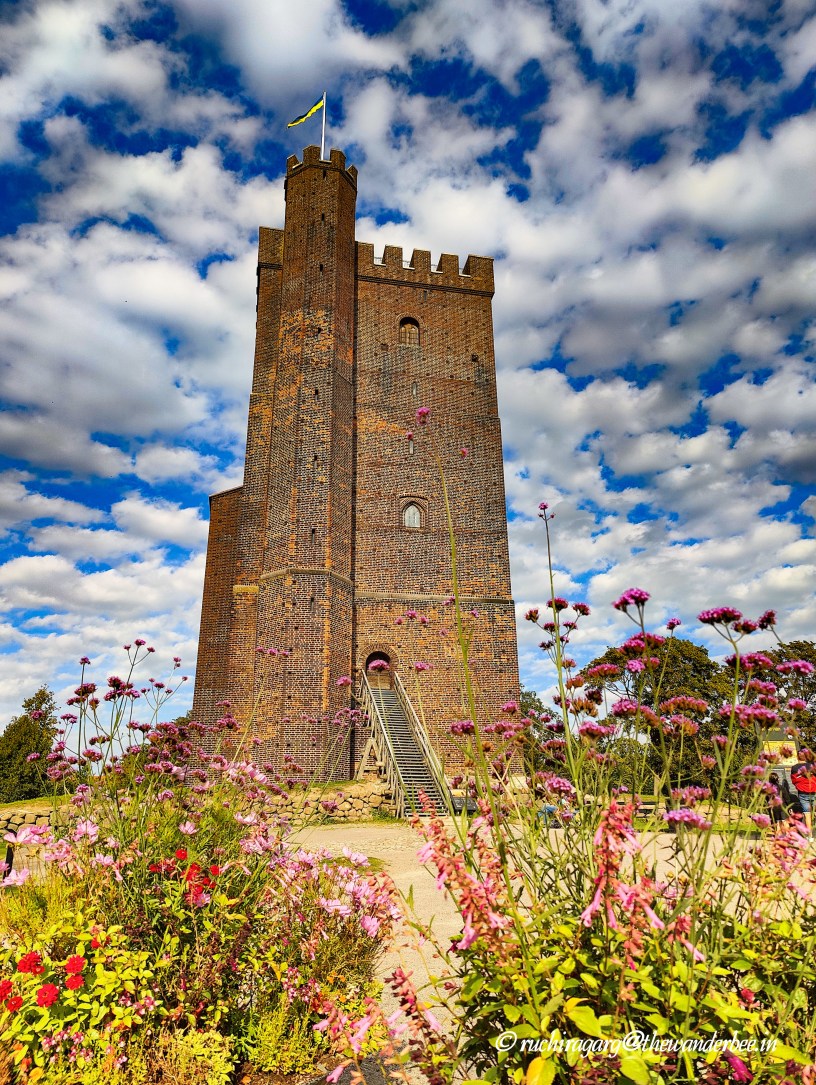Whenever I mentioned Sweden to anyone, the top two terms heard in response were “Stockholm Syndrome” and “Swedish Massage”. There is very limited understanding of what Sweden holds and understandably so. The severe winters often overshadow the breathtaking views the country has to offer, and it doesn’t stand out amongst the top countries to visit in Europe bucket list. In a way, perhaps the lack of overwhelming crowds has helped Sweden retain its charm.
With my friends relocating to Sweden, I was intrigued to know more about this country. So, when I decided to explore the Nordic countries, it naturally came up on my list. To get to Sweden one needs a Schengen visa. If you are travelling only to Nordic countries, then a single-entry Schengen visa is good to complete the entire trip. Plan at least 10 days in Sweden to truly absorb its flavors. After much research and keeping in view that I could not see everything there was to see, here is the itinerary I followed:
STOCKHOLM
I started my Swedish encounter with the capital city of Stockholm. The airport is around 40-45 minutes away from the city. I took a Flybus airport shuttle which dropped me off at the city center. My hotel Scandic No. 53 (read review here) was at walking distance. If walking with luggage through cobblestone streets is a constraint, taxis are easily available, and the ride would cost about 10 Euros.
The weather in Stockholm around mid-September was very pleasant. A light jacket and a light woolen inner layer were good enough for the cold. Here is my list of places to visit in Stockholm and my experiences with each of them:
- Vasa Museum: This is one of the most visited museums of Sweden. The museum displays the only almost fully intact 17th-century ship that has ever been salvaged, the 64-gun warship Vasa that sank on her maiden voyage in 1628. It is a 3-story museum divided into different sections and one can see various artifacts that were found on the ship or have been recreated, specially the faces of some of the sailors. The ship is very impressive to see as you go on the higher floors and explore it up close. The museum has a huge elevator, toilets as well as a café inside. It takes about 90 minutes to completely explore the museum.

- Skansen Museum: This is the world’s oldest open air museum and zoo dating back to 1891. It shows the way of life in the different parts of Sweden before the industrial era. The museum is spread over a massive area and even the whole day is not enough to explore it. There are farmsteads and town squares as well as the zoo. Would recommend that you do some research on which sections you would want to visit as walking around can become very tiring. The zoo houses various Nordic animals like the arctic fox, lynx, brown bear, grey seal, moose etc. I took the funicular railway as the climb up to the main area of the museum from the gate was very steep. Would recommend it if you don’t want to tire yourself even before you start exploring the museum.
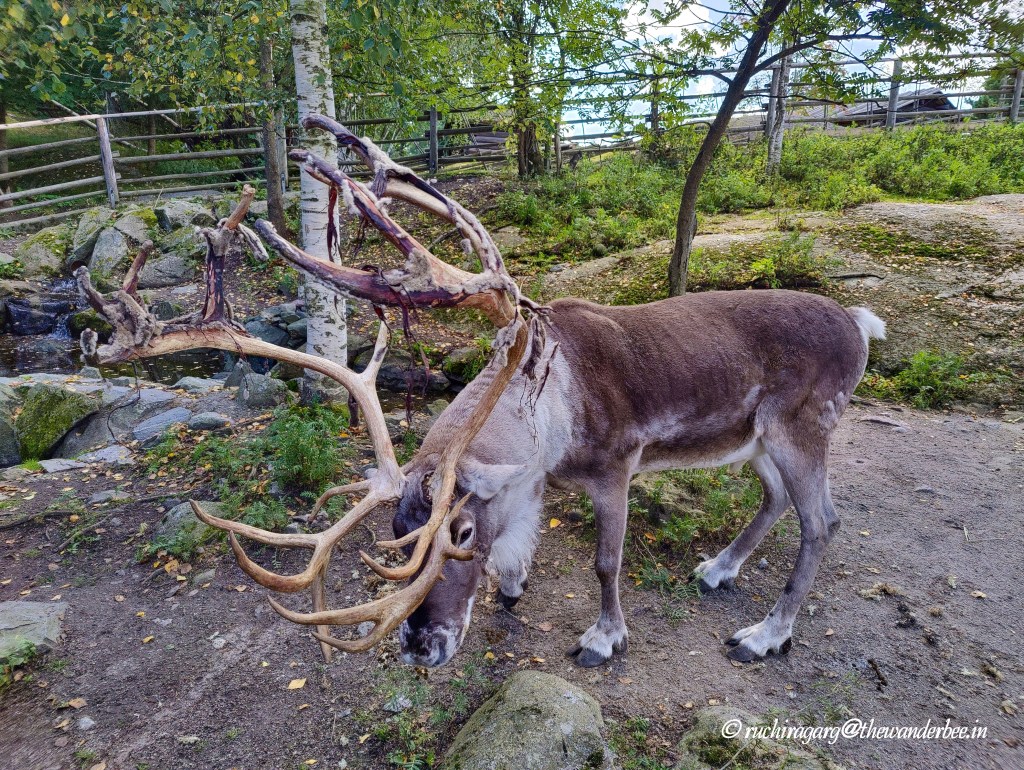

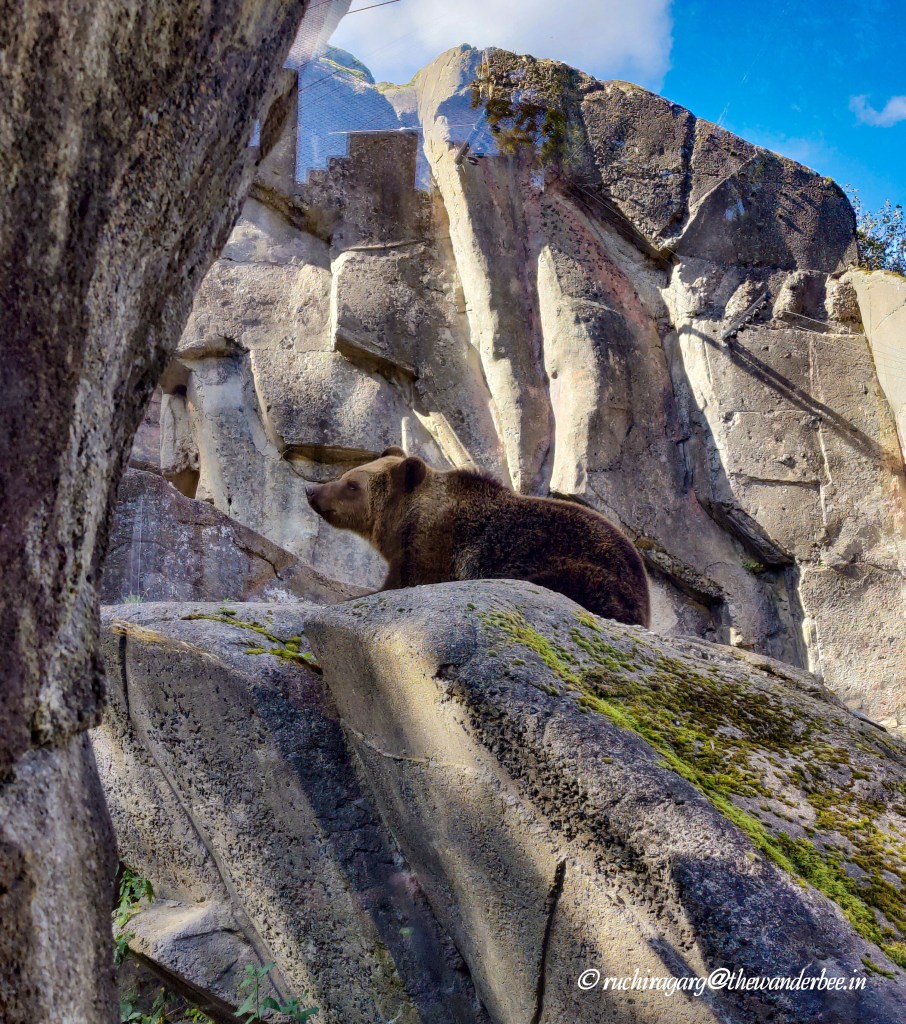
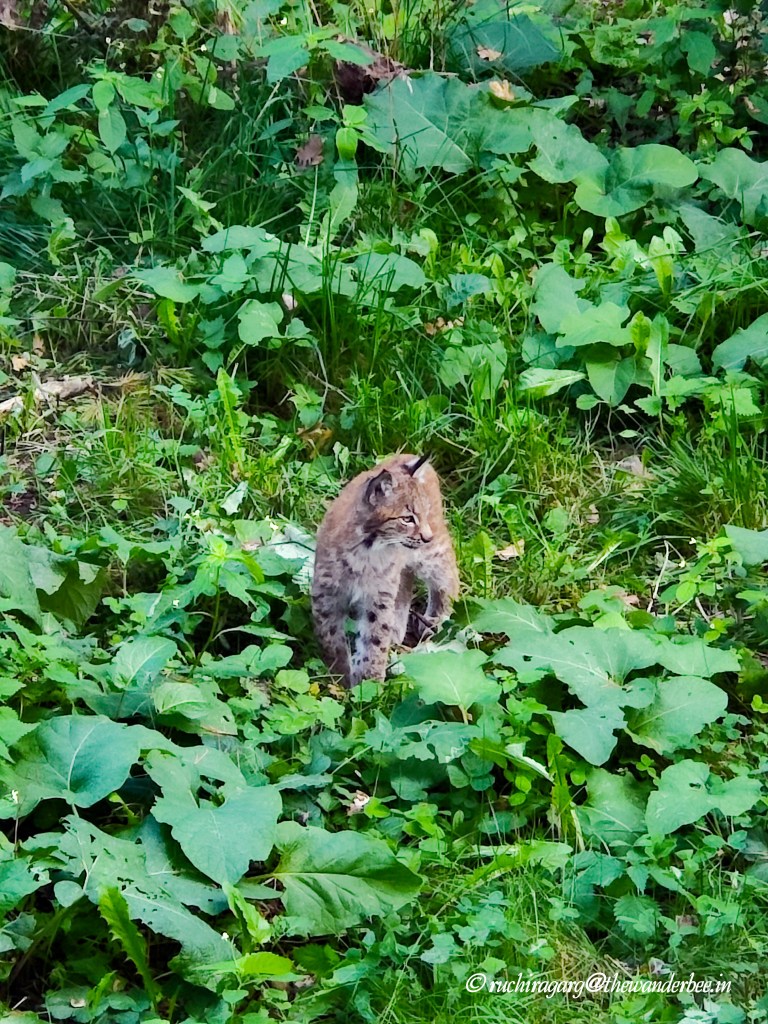

- Paradox museum: This is a fun place to be at. The fascinating collection of paradox-based exhibits makes it an enjoyable place for all age groups. Some exhibits may make one giddy so apply discretion. Would recommend that you go to the Paradox Museum with someone so you can take pictures of each other as the incredible pictures are the main charm of the museum. While other museums like Vasa, Skansen and Nordic Museum are located next to each other, Paradox Museum is near the City Terminal.
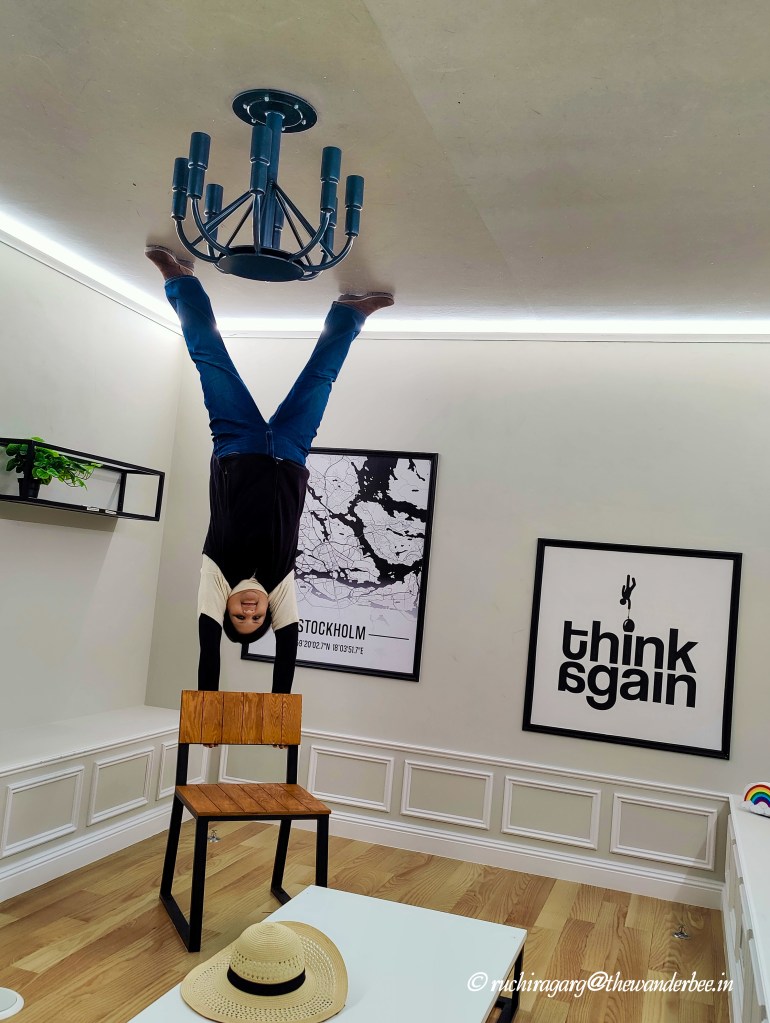

- Gamla Stan: Gamla Stan, or Old Town, is Stockholm’s original city center. It has narrow winding cobblestone streets and houses heritage buildings such as the Royal Palace, The Stockholm Cathedral, The Medieval Museum, The Jewish Museum, The Nobel Prize Museum, and The Royal Armory. It was a 15-minute walk from the City Terminal. The ovel Prize Museum is located in the main town square surrounded by cafes, restaurants and souvenir shops.
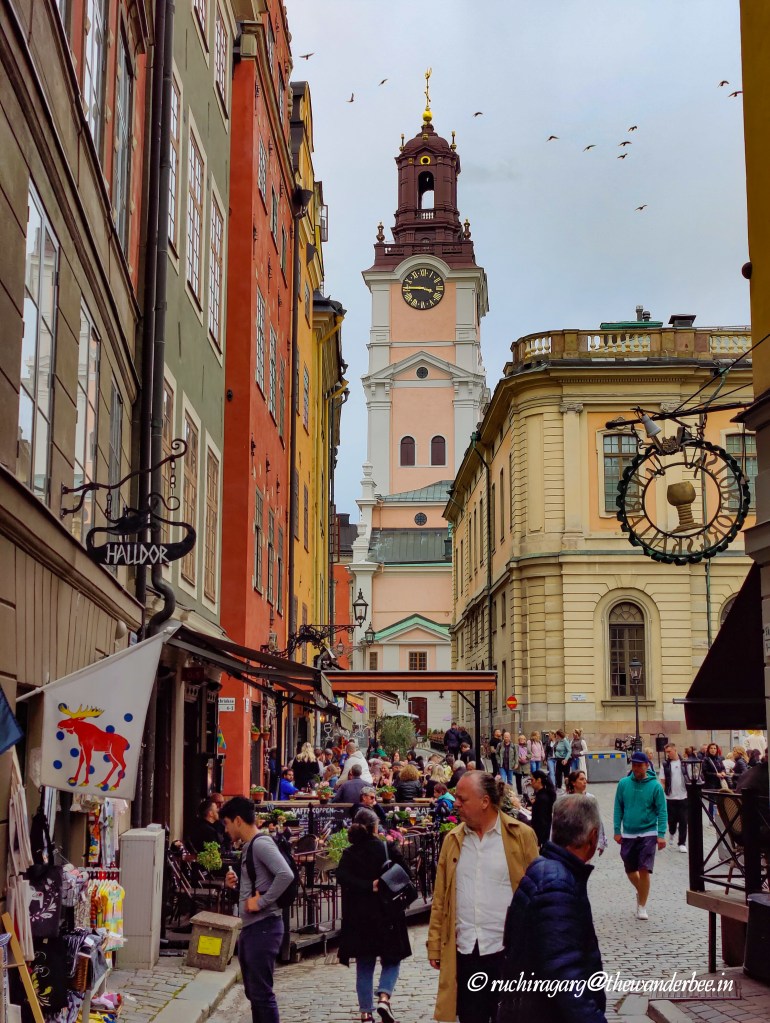

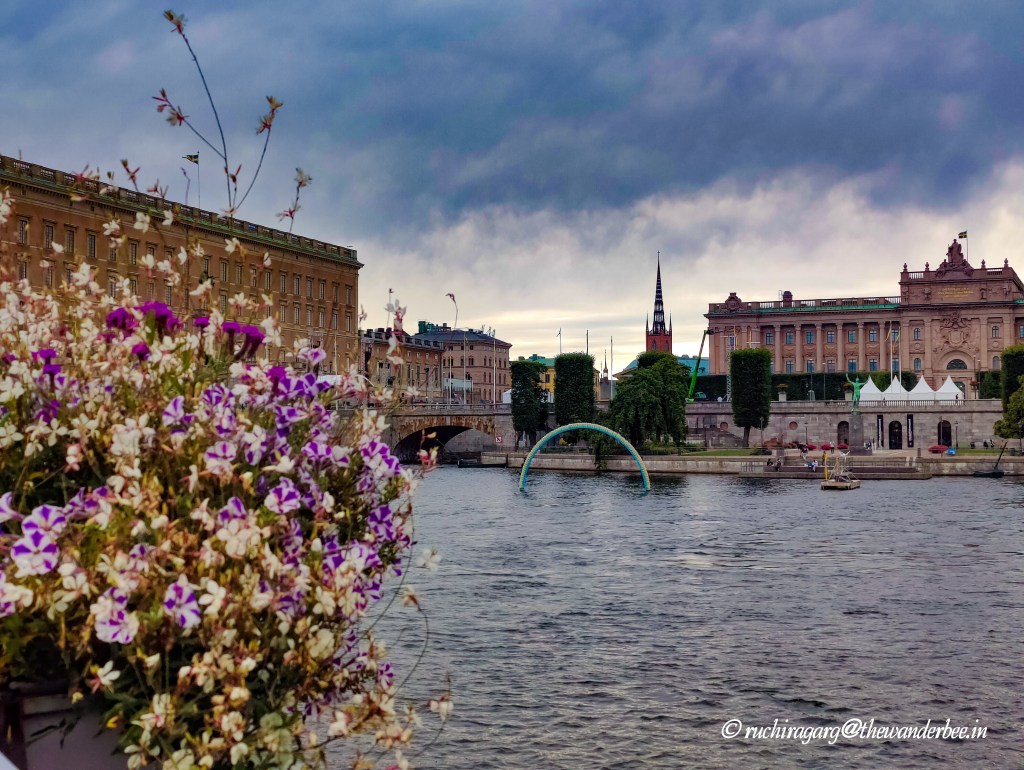
- Royal Palace: Being the seat of the Swedish Monarchy, do visit the Royal Palace if it is open (check for its opening dates and timings). The Royal palace located in Gamla Stan is at walking distance from the City Terminal. I was fortunate to witness the 50th Anniversary celebration of King Carl XVI Gustaf, the current monarch of Sweden.
I also saw the dress rehearsal for the parade up close the previous evening and it was an absorbing experience.
There are all kinds of cuisines available in Stockholm. I would recommend Vette Katten a renowned café for catching up with friends or just spending time with yourself, Mae Thai for a quick meal and fast food and the Indian Garden if you are craving for Indian food.
The city center was safe to walk around even at 10 p.m in the night. Credits cards were accepted everywhere and seemed to be the norm with a lot of places being completely cashless.
UPPSALA & SIGTUNA
This is a great day trip to take from Stockholm to get deeper into Viking history and understand the Stockholm heritage. I booked it through GetYourGuide though there are other sites available too. It’s a full day trip from 9 a.m to about 6 p.m. It was a small group tour of about 12 people. The tour took us to the Viking Age landmark of Jarla Banke Bridge, Arkils Tingstad including some runestones from the late Viking era. Do not expect a huge memorial. It looked like plain grassy ground with the runestones but the context and stories from our guide were fascinating.
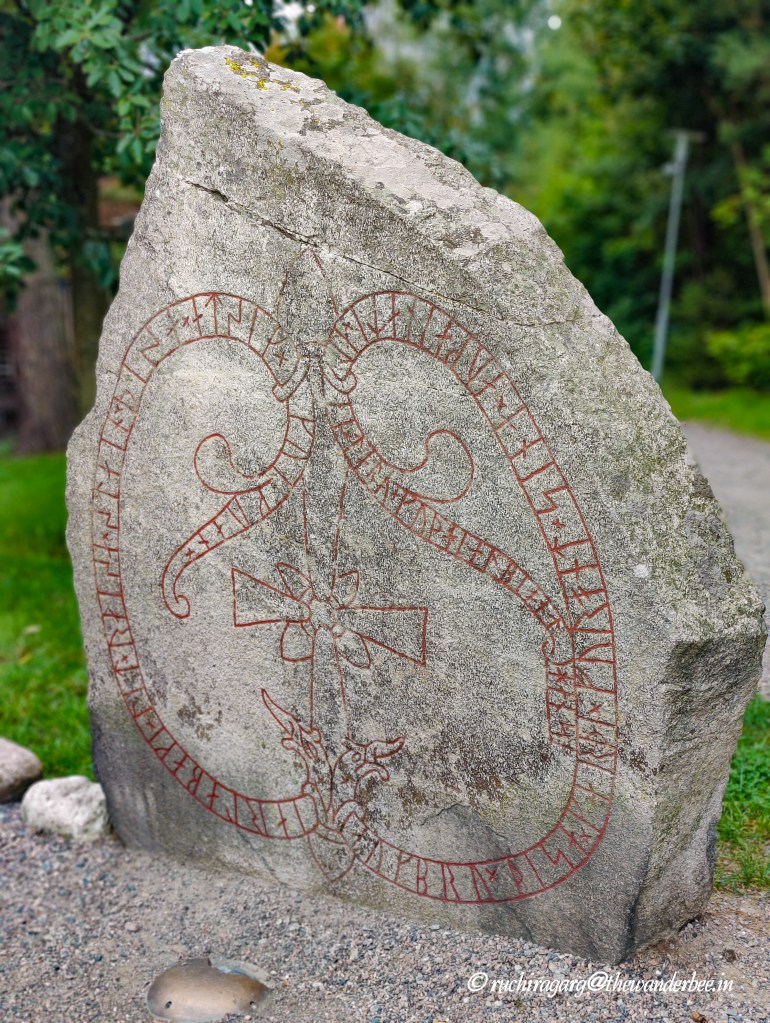
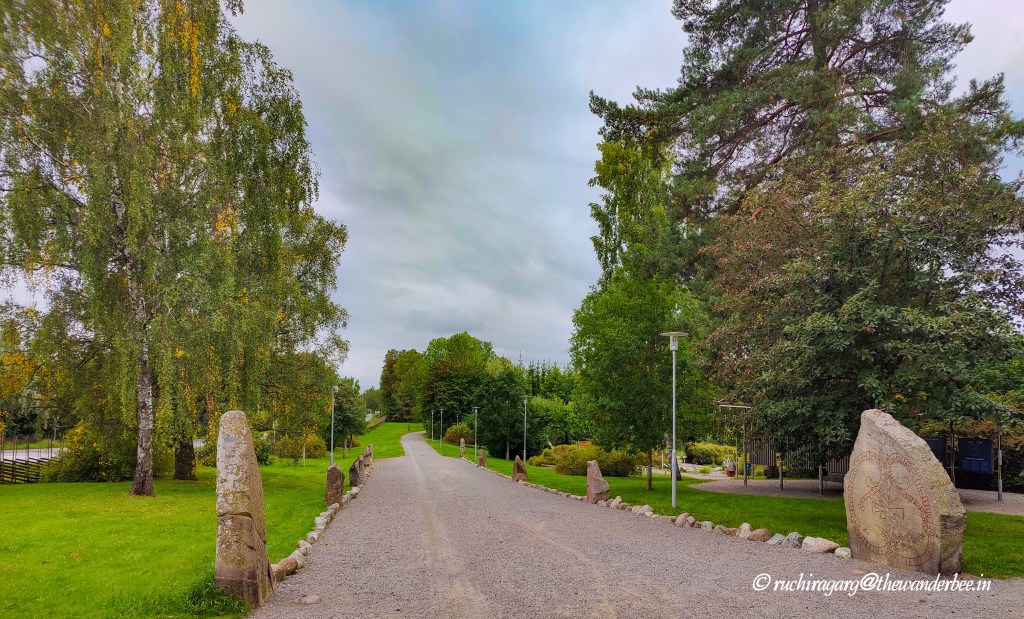
We also visited the Vallentuna church, which opened in 1198 AD, shortly after the Viking age. The tour stopped midway at Granby farm Hokeriet, where a fika (swedish for coffee) was served with a lovely chocolate pastry. It was a very enjoyable break in a quaint setting and even though we were strangers when we embarked on the tour, the conversations during the break brought us together.
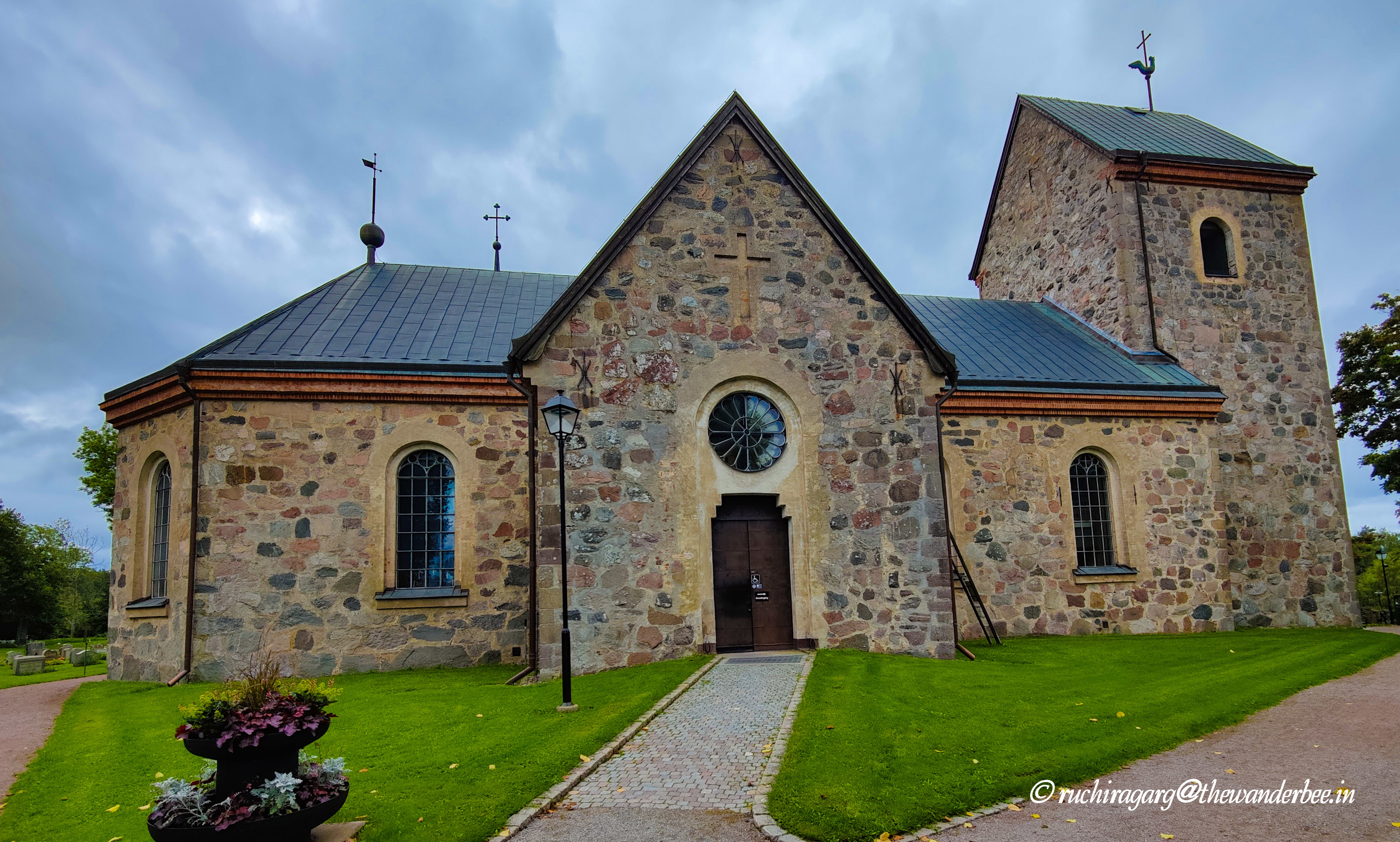
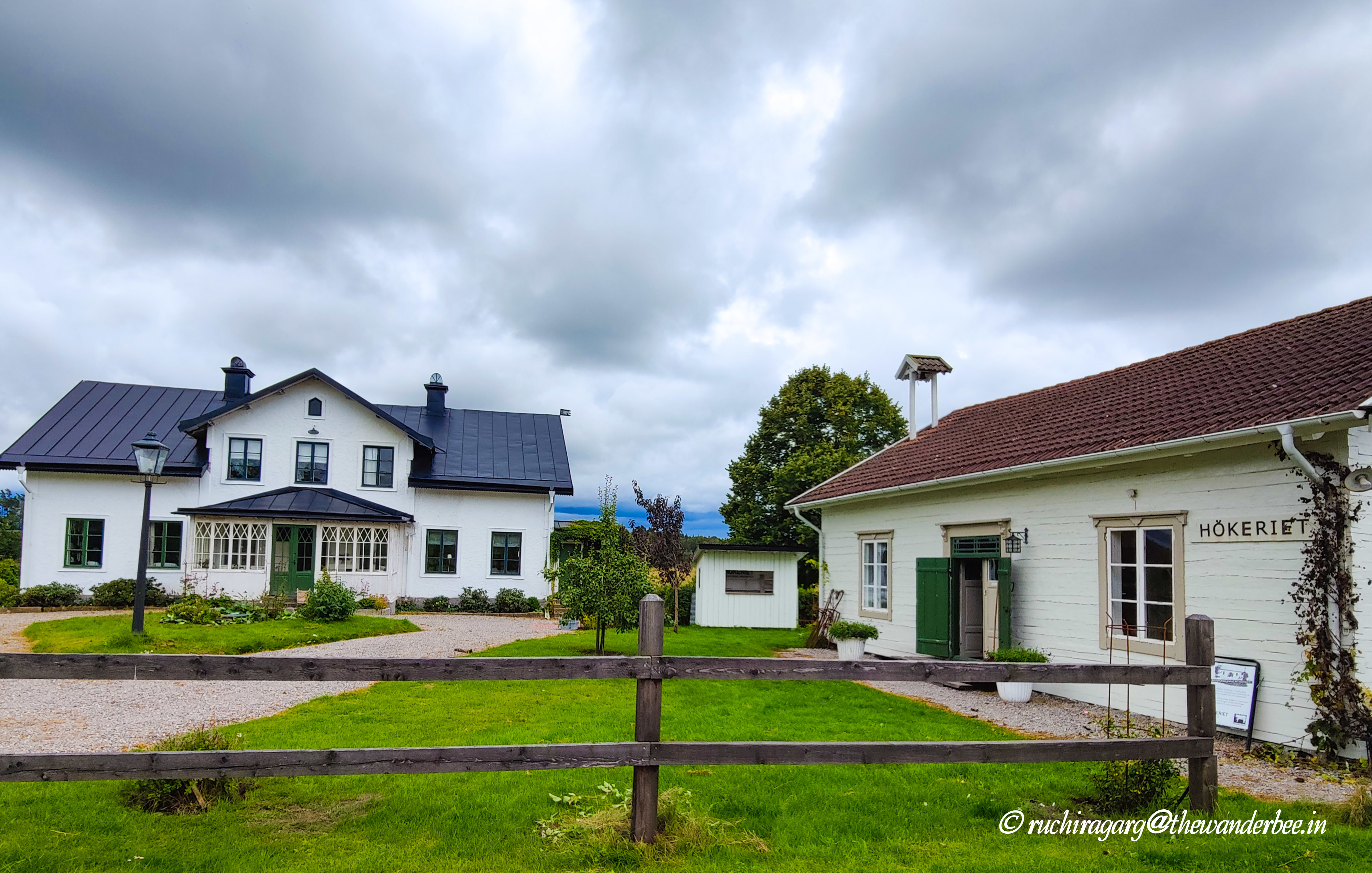
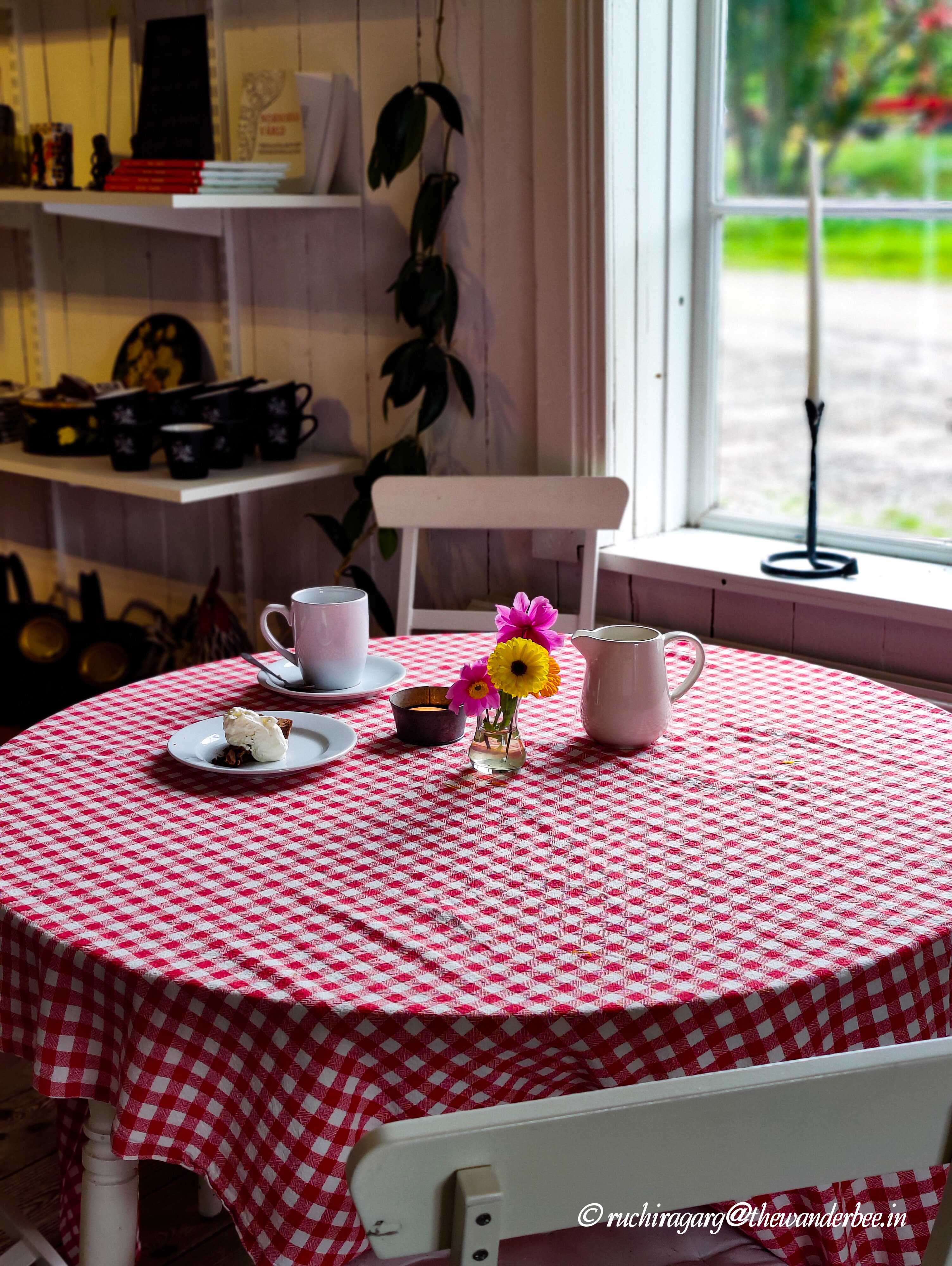
We continued to the charming town of Sigtuna, which was founded in the late 10th century and is one of Sweden’s oldest towns. It had a charming street full of shops and cafes. With a typical European vibe, walking through the street and enjoying the food at one of the cafes made it a memorable afternoon.


At Sigtuna, we also explored the ruins of Saint Olaf church, the Norwegian Viking warrior, who later converted to Christianity and finally became a Saint.

In Uppsala, we visited the famous Gamla Uppsala burial mounds. These mounds date back to the 5th and 6th centuries and are believed to be the final resting place of Viking kings and heroes. Unlike the massive structures of the Pyramids in Egypt, these mounds looked like small hillocks and at times people unknowingly climb on to them. There are signboards preventing them to do so in respect of the country’s heritage.
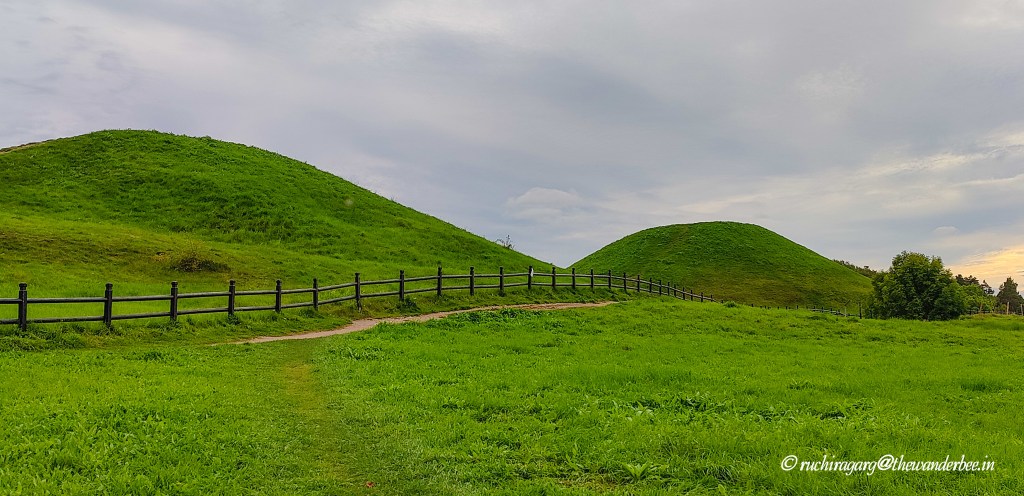
Our last stop was the university town of Uppsala, where we visited the mayor cathedral. The cathedral is also the burial place for many of the kings and queens and was a lesson in Swedish history itself.
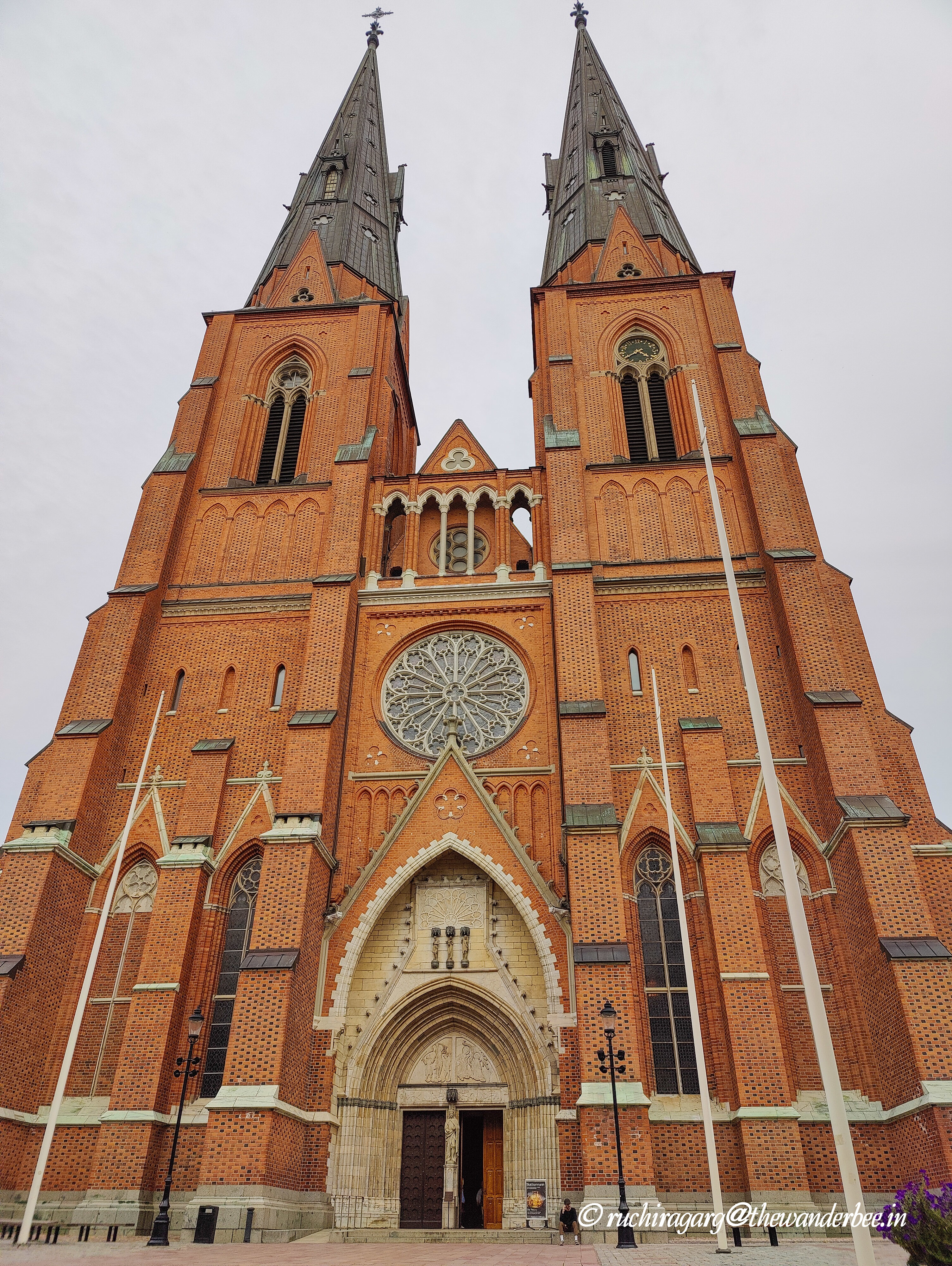
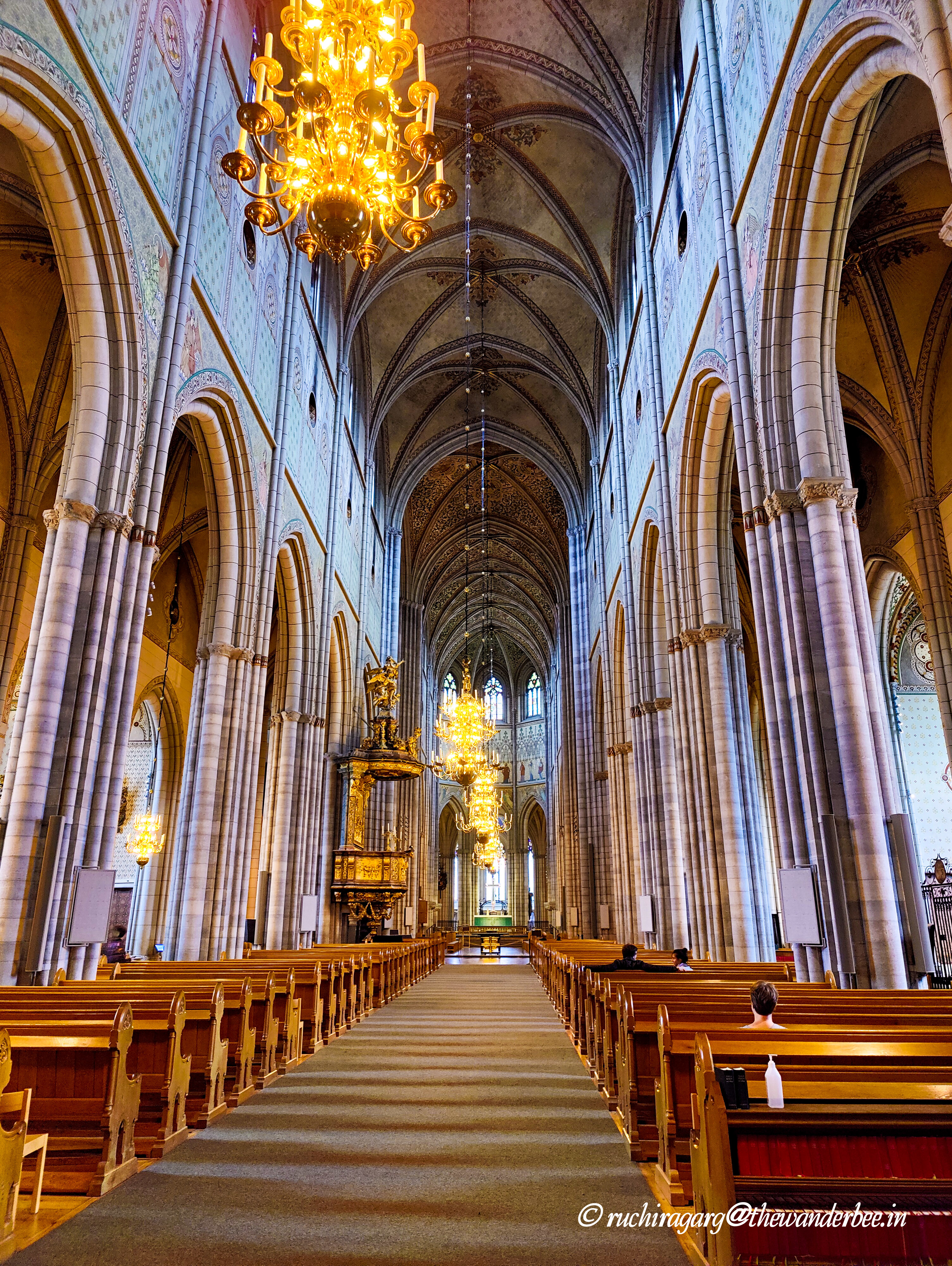
HELSINGBORG
After experiencing the deep roots of the Viking heritage at Stockholm, Uppsala and Sigtuna, I headed to the southern part of Sweden to Helsingborg. This is Sweden’s closest point to Denmark and one can stay in Helsingborg and make day trips to Denmark. I have covered Denmark experiences in a separate post here. While I stayed with friends at Helsingborg, here are the various places I visited would recommend:
- Kärnan : is a medieval tower and is the only remaining part of original Helsingborg Castle that was built by King Eric VI of Denmark at the start of the 14th century. The tower is surrounded by beautiful parks and the view from there as one looks over the city center of Helsingborg is amazing.


- Kullagatan : Being Sweden’s oldest pedestrian street, Kullagatan is a walking delight even if you don’t want to buy anything. With lots of cafes and places to eat and drink along with the little shops, you can perfectly relax here while enjoying the flavour of life in Sweden. Do try the Espresso House known for its coffees, shakes and cookies. I had one of the most amazing (and filling!) Caramel Iced Lattes there.



- The Kullaberg Nature Reserve at Mölle: The advantage of staying with locals is that you get to see sights which don’t show up in internet searches. This nature reserve is full of dramatic cliffs, caves, hiking and cycling trails and was a perfect day outing to enjoy the sunny weather. Be it the view from the lighthouse or the flavorful ice cream at the little shop there, the pets enjoying their day out, the cyclists whizzing past or those enjoying a dip into the cold sea water, it had something for everyone. A great place for a picnic lunch with amazing views. The drive to and from the nature reserve is also very scenic.
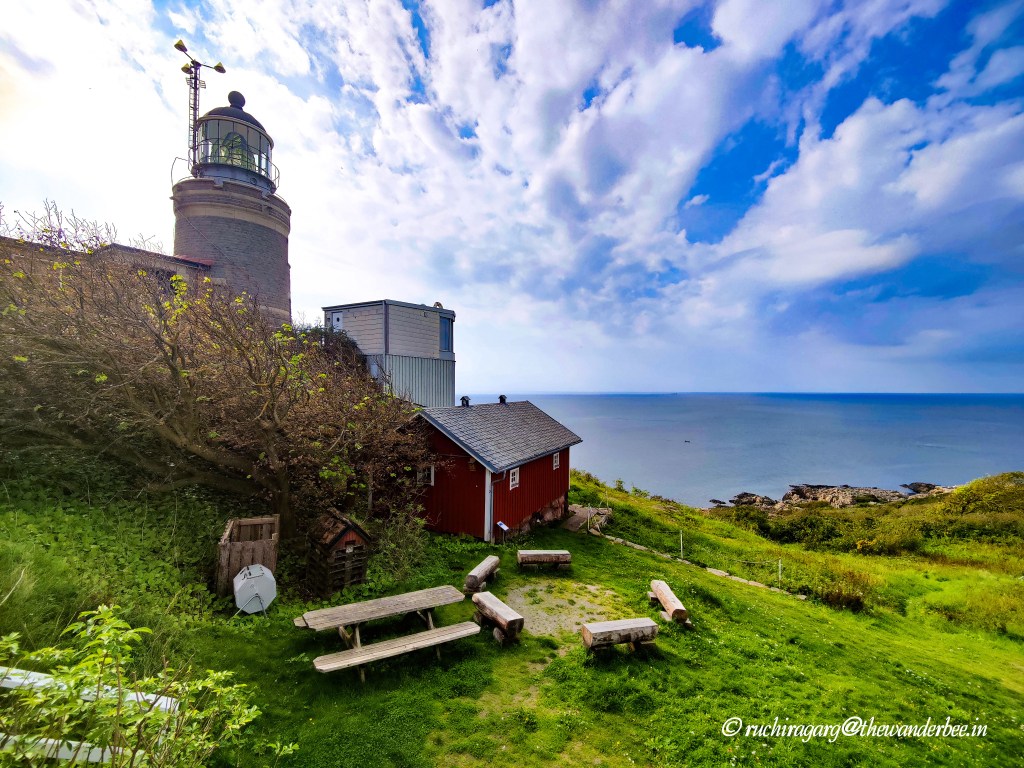



- IKEA : With its origins in Sweden, I would recommend a visit to the IKEA (known for its ready-to-assemble furniture, kitchen ware and home accessories) outlet. The large display of modern furniture designs is worth looking at. The Vala Centrum mall is next door and stands out for its picturesque interior look of a European shopping street with quaint home windows overlooking the stilt floor.


- Ferry to Helsingkor: From Helsingborg Central, one can take a ferry to the Danish city. Helsingkor. The ferry is very popular for the lower price rates for liquor in Denmark and a lot of people are seen carrying stocks back home. The journey is about 20 minutes. There are multiple food and drink counters and even if you just want to take a ride to and fro over the Sound (another name for Øresund, the strait that marks the Danish- Swedish border) it is an enjoyable experience. Once you disembark at the ferry terminal at Helsingkor, you can even take a train to Copenhagen. This is another way to travel to Copenhagen airport from Helsingborg if you have an international flight.
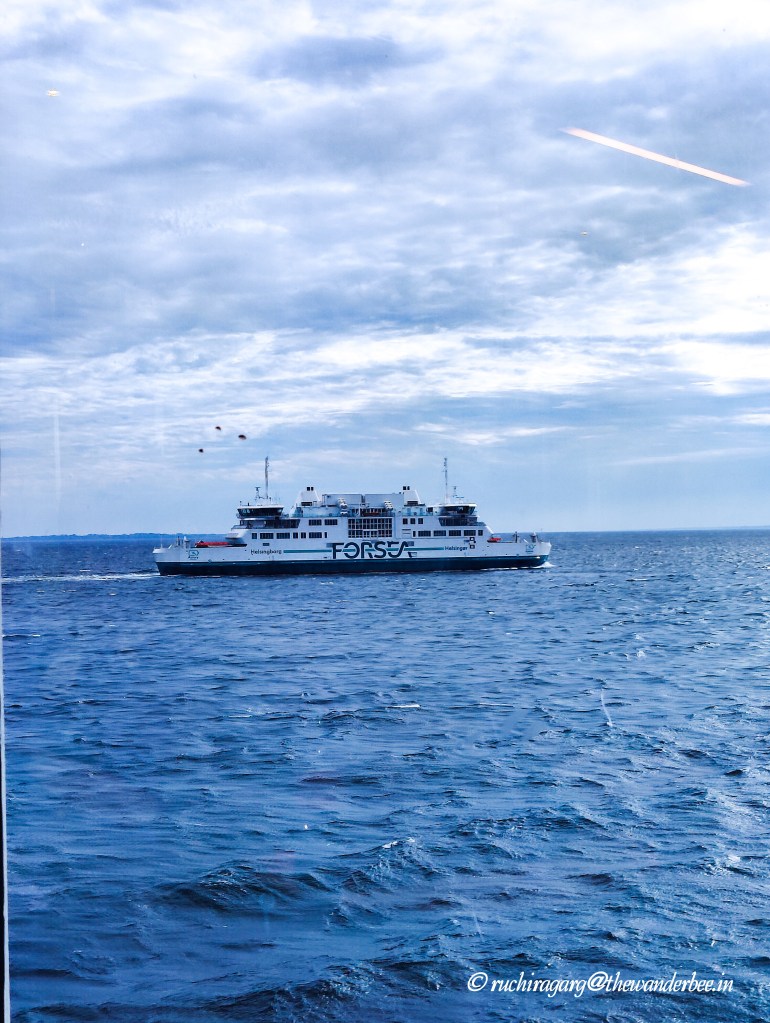
There are a lot of food options available in Helsingborg. A couple of places I would strongly recommend are Strandhuset –Asian and Thai restaurant and Espresso House for some yummy, iced lattes and cookies.
LUND
Lund, found in the 10th century is one of the oldest cities of Sweden. One can take a train from Helsingborg to Lund and it is about a 45 minute ride. Typically, one would do Lund and Malmo together on the same day either by bus tour or via train as they are next to each other. I took a 24 hour train ticket at Helsingborg with Malmo as the destination and could break the journey at Lund. Here are the areas of interest that I saw in Lund:
- Lund Cathedral : The Cathedral of Lund was consecrated in 1145, and contains many well-known artefacts and features of considerable historical interest. Lund Cathedral has been called “the most powerful representative of Romanesque architecture in the Nordic countries”.

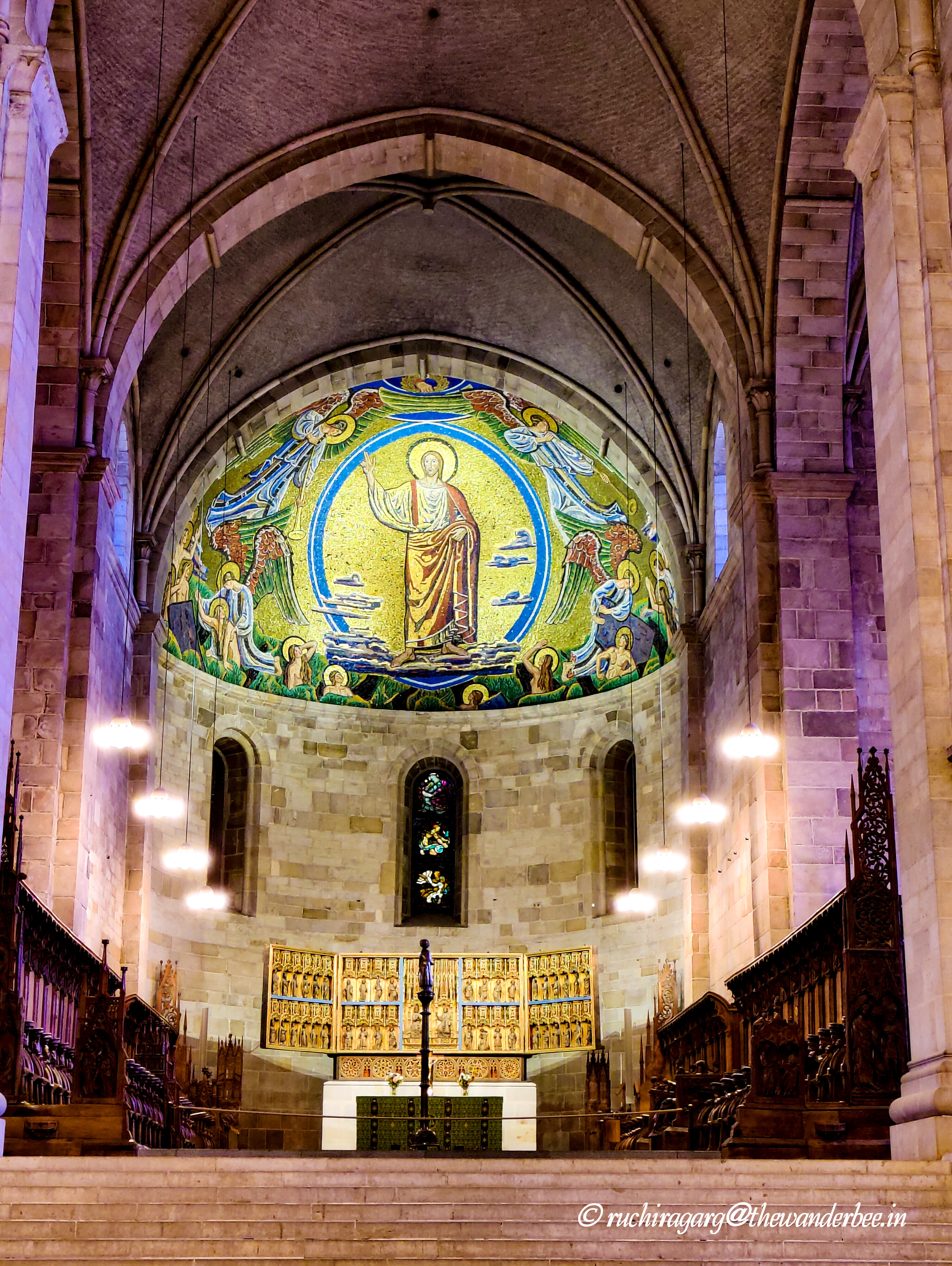
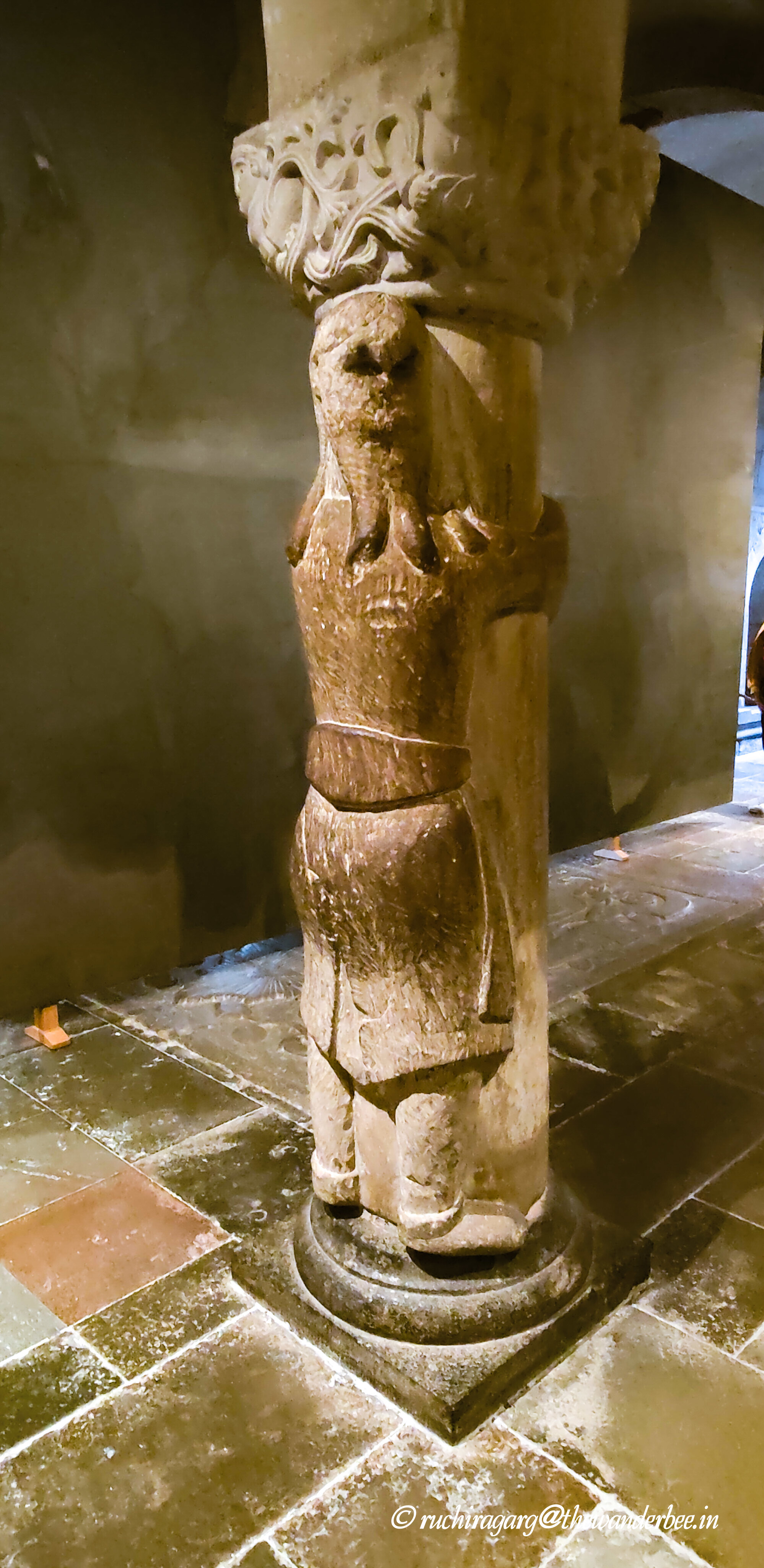
It also houses an astronomical clock which is a magnificent structure dating from about 1420. The upper part, which is original, is the clock, while the lower part, a reconstruction, is a calendar. Twice every day at 12 p.m and 3 p.m- the two knights on the top clash their swords. The clock then plays the tune In dulci jubilo and a procession of figures representing the three Kings with their servants parade across the face of the clock. I was mesmerized to see this event as well as the calendar which even after so many years is perfectly accurate. See this video for what happens when the clock strikes 12!
- Lund University: Lund University was founded in 1666 and is ranked among the world’s top 100 universities. It would be appropriate to call Lund a university town. Students from all over the world come to study or attend conferences at Lund. One can walk around the various faculties or have a cup of coffee at the University café. The town itself has various cafes, pubs, and eateries. I could practically cover the whole town on foot.
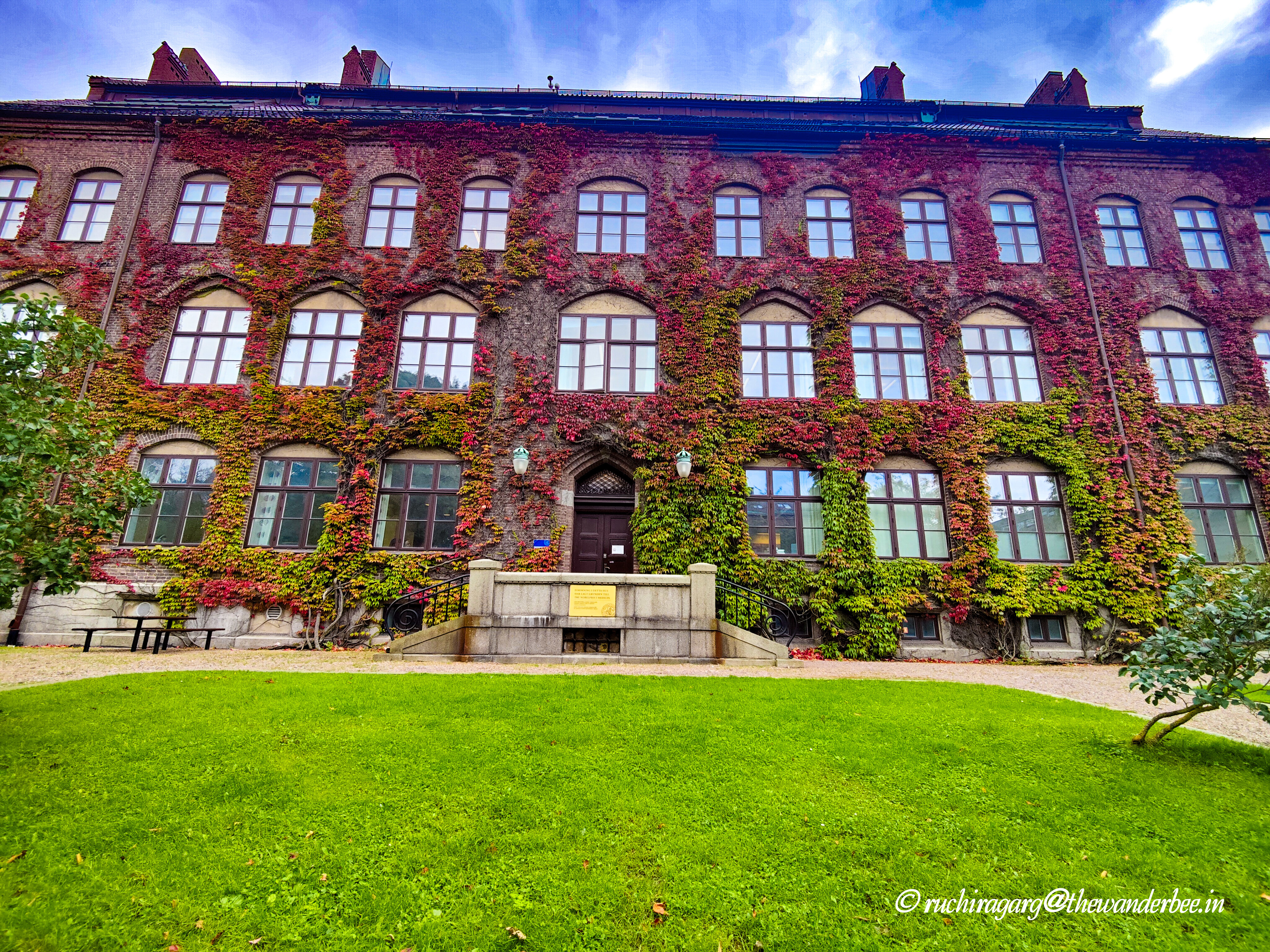

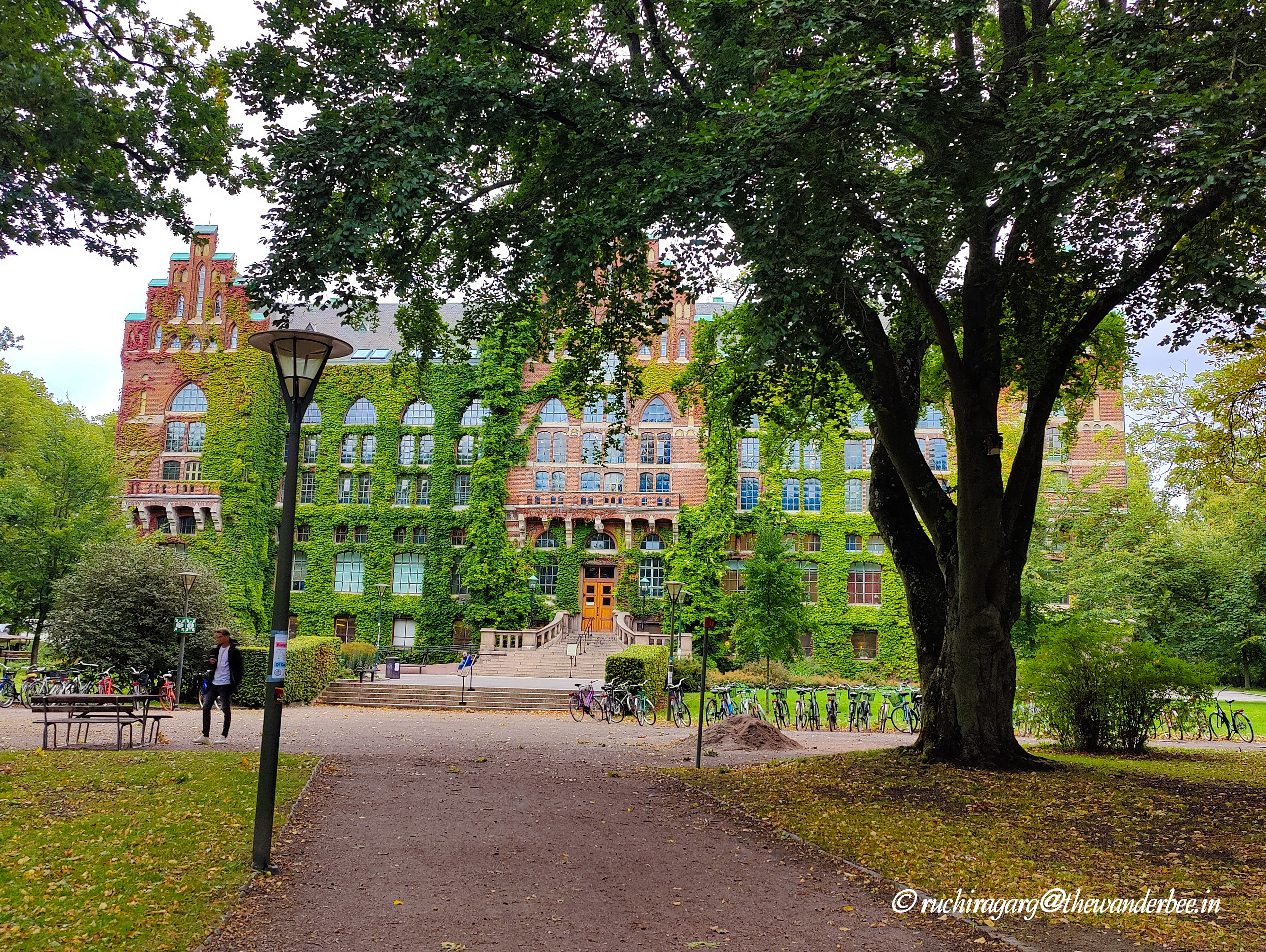
- Botanical garden : for those more inclined to nature, the botanical garden is a good stop as you walk through Lund. In September, the flowers were at the fag end of their bloom yet the colors and diversity were beautiful to see and a treat to the eyes. There is a small café and washrooms are also available there, making it a perfect stop during one’s exploration of the town.
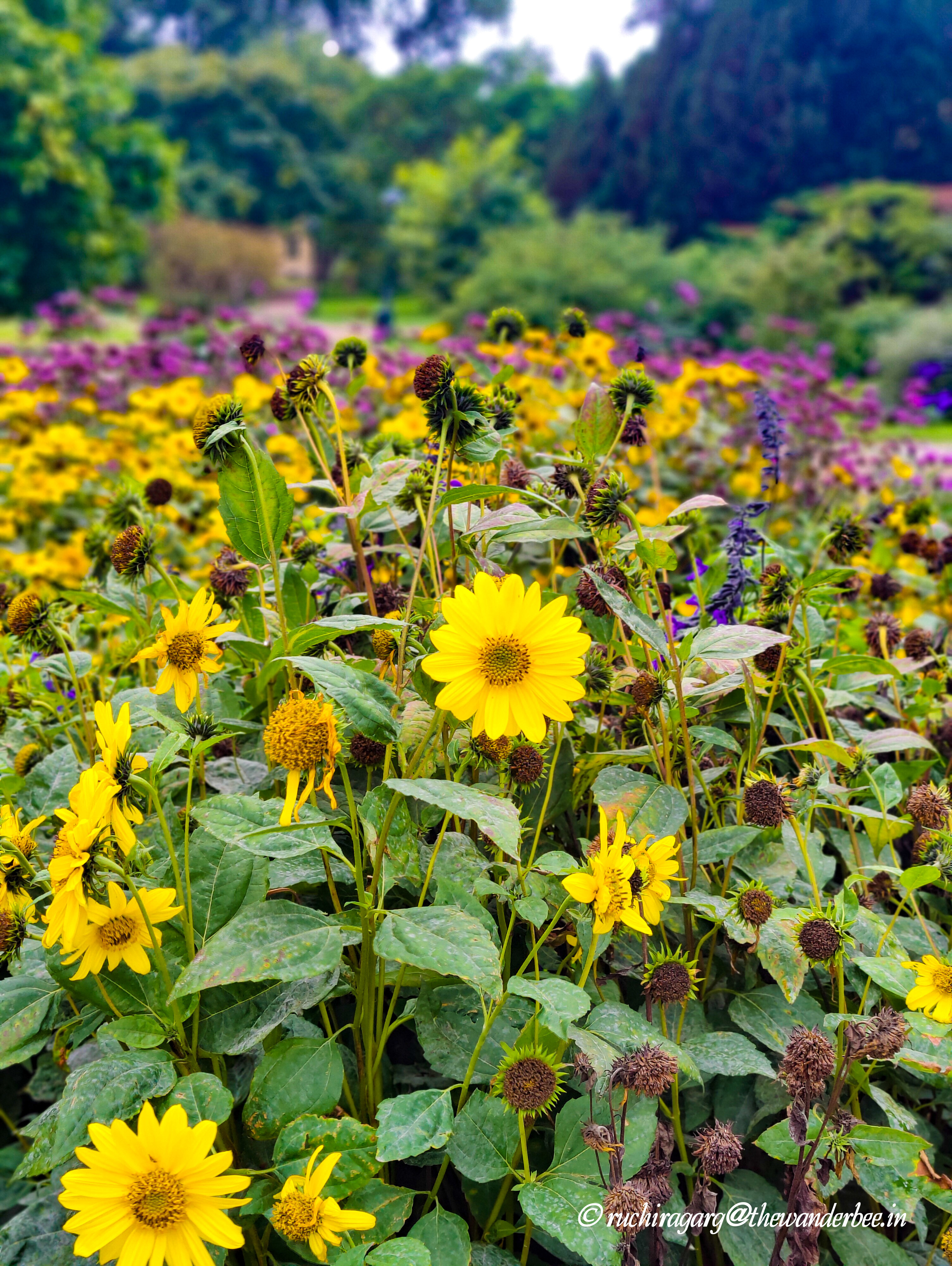


MALMO
Malmo lies at the eastern end of the striking Öresund Bridge, a half road/railway bridge, half underwater tunnel running to Copenhagen, Denmark. The bridge is not just an architectural wonder but also a beautiful sight and with its vantage point, viewing the Öresund Bridge was the top attraction of Malmo.
- Öresund Bridge : While there is a dedicated lookout point at Luftkastellet, I had read that the footpath stretching around most of Ön offers the best undisturbed view of the Öresund Bridge. I took this path and was not disappointed. I took the bus from Malmo Central and walked a little way to get to the viewpoint. Ön is home to the posh residences of Malmo and the view of the bridge is striking with no crowds. The Öresund Bridge is not a pedestrian bridge. One can cross this bridge by train or bus while travelling between Malmo and Copenhagen. I did get a chance to cross it while travelling to Copenhagen by train.


- Turning Torso: The Turning Torso is a modern architectural marvel. At 190 metres (623 feet) tall and 54 storeys high, the building twists through 90-degrees from base to tip. The nearest bus stop for Turning Torso is Propellergatan. Since I was coming from Ön, the bus stop was much further away, and I had to walk for 15 minutes to get to the Turning Torso even though it could be seen from afar.

The above itinerary was for 8 days. I also explored Helsingkor and Copenhagen in Denmark during my stay at Sweden. Click here for my blog on things to see and experiences in Denmark.
A few things to keep in mind while exploring Sweden:
- Credit cards are accepted everywhere. I did not need to make any payments in cash anywhere. Some hotels and restaurants specifically say that they do not accept cash. However, ATMs were available everywhere.
- Most restaurants, museums and other public places have washrooms which are very clean and well maintained.
- Swedish is the first language for all instructions, so Google translate comes in very handy to read sign boards and food menus. However, if you mention to the staff that you only speak English, they will respond in English.
- It is very difficult to follow instructions on the train as they are primarily in Swedish and even the English is not easy to understand in the flow. Be alert for your station.
- The route for the superfast train from Stockholm to Helsinborg is very curvy and made me quite giddy. Flights may be a better option on this route.
- Please check the internet for the bus and train details as there are usually no staff available at the train stations to help you. Tickets are dispensed through fully automated machines. Sometimes train routes may also get cancelled on some days.
- Since most of these cities are covered on foot, having data activated on your phone is a necessity so you can follow directions. While staff at the hotel would give you a map, it is much easier to have the GPS on.
- The weather in September is pleasant but it is very windy, so a wind cheater is essential. It can rain unpredictably so carry a poncho.
The weather apps showed rain every day during my trip, but I only experienced it on one day so don’t let them dampen your travel plans. Despite the weather, Sweden is a warm, family friendly country. It is a delight to see people playing with their children or walking their pets. You will always get a smile and find someone to help if you are stuck.

